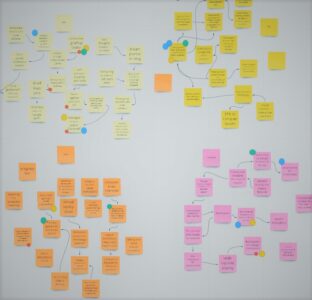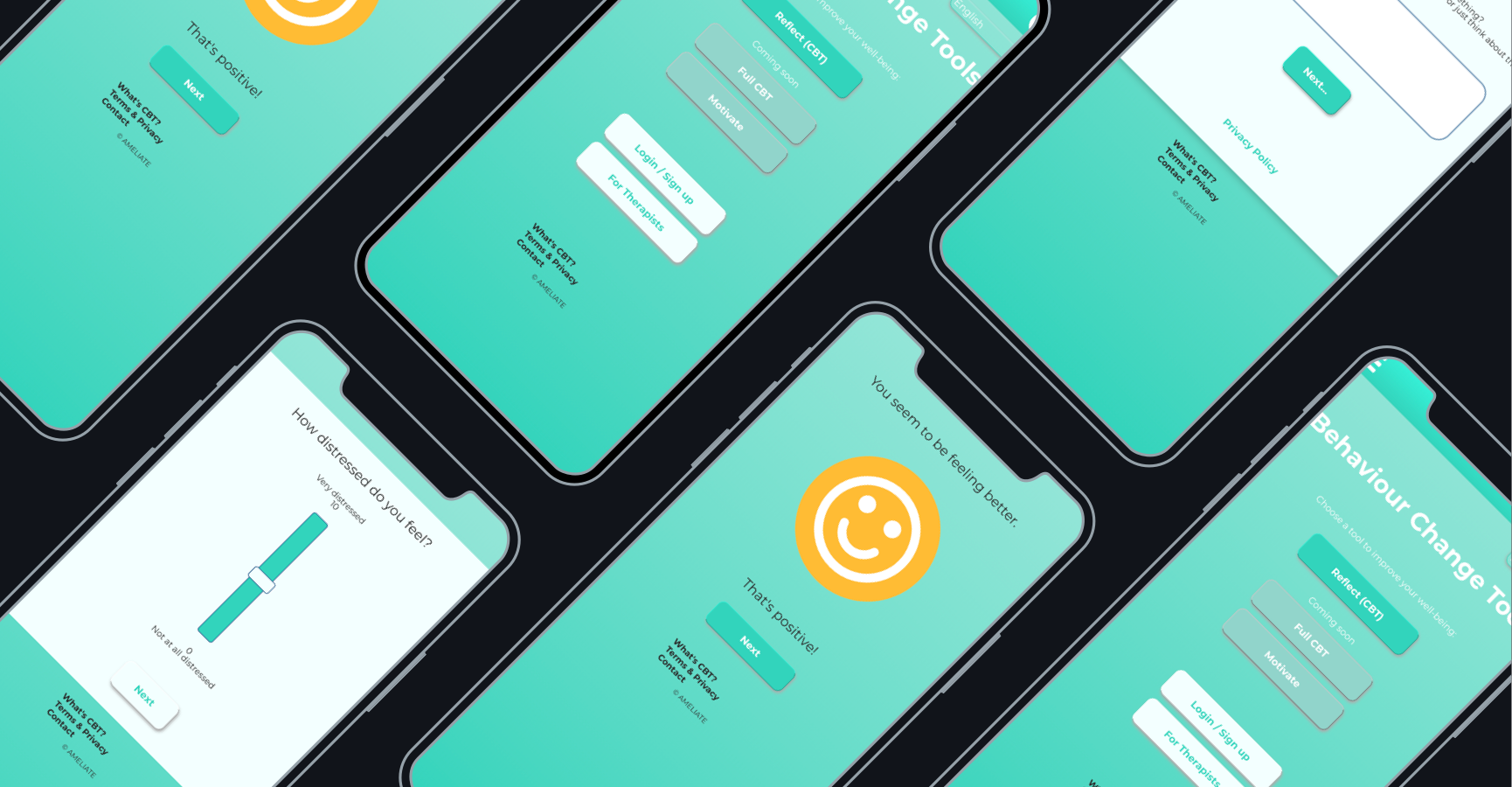
Design bootcamps are fun!
Creative structure, intensive work, immersive environment… what a way to invite creativity and find fresh ideas. Time constraints make you forget the inner critic and solely focus on the creation process. Keeping the goals clear and organized is the key.
We ran a 2-days design bootcamp to generate ideas for digital mental health. We raised questions like how to integrate mental health practices into a daily routine? How to support mental health practices with technology? We were also interested in supporting a client/therapist relationship to communicate progress and facilitate meaningful dialog between the two.
We used a brainwriting pool technique that produced loads of ideas for us, in a short time. We picked 2 ideas to converge on, and split into teams to work on a design concept. Working in quick iterations gave us tangible results in a matter of hours.

On Day 1 we focused on design concepts with sketches to visualize the ideas. Working from this idea based on knowledge about a specific user, in a specific context, gave us a confident foundation to converge further.
Participatory design to develop these ideas
On Day 2, we jumped into preparing participatory design activities and ultimately, their execution. Participatory design is a great way to co-design user journeys and draw upon personalized user experience through various activities. We will give an example from Idea 2. There is no wrong or right way to prepare a participatory design process, in this case, we prioritized exploring a couple of things:
- What should the voice recording should be like? (e.g., What is the preferred length? Should it be a free-style or prompt a specific story?)
- How does the generated art spark a dialog between the therapist and a client?
Thus, in the first activity participants recorded voice memos of different lengths, using prompts or stream of consciousness. Each participant was asked who they would feel comfortable, or prefer sharing these memos with, then we acted out scenarios as if the voice memo had been shared. This gave us an understanding of the preferred voice recording style and length, as well as who the user might want to share the recordings with. Most importantly, we got a glimpse of how sharing a voice memo opens a discussion with a therapist, family or friends.
In the second activity participants used this website to generate art based on some current thought and feeling. Again we did a role playing exercise: the owner of the generated art was the client, while the rest shared duties as their therapists. This illuminated some of the strengths, but also many hurdles to using art as an entry point to therapy. (Also, the difficulties of having UX designers as your therapist!)
In summary, this design bootcamp, and more specifically the participatory design sessions, offered a deep glimpse into reimagining the design concept and gaining insights on the user experience. The variety of design thinking methods can be intimidating, and if you would like our advice let’s have a chat!


